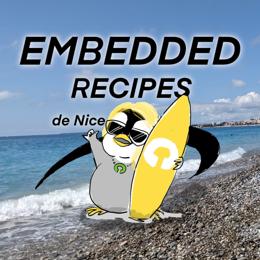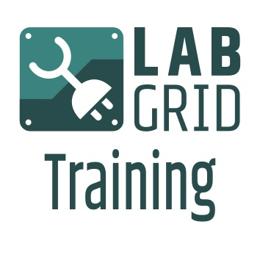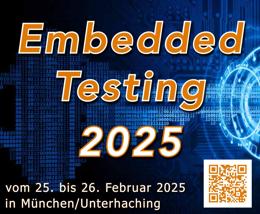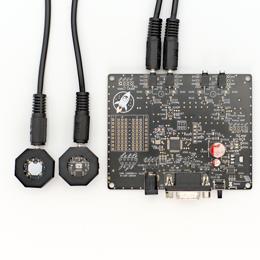Linux Automation Test Automation Controller: A one Device labgrid Exporter
Our subsidiary Linux Automation GmbH introduces the LXA TAC (Linux Automation Test Automation Controller): an all-in-one labgrid exporter. The LXA TAC offers the usual interfaces to control one or more embedded devices (DUTs, devices under test) interactively or automatically with labgrid.
Devices with embedded Linux are designed to interact with the real world. So, during development we need to interact with physical devices and their interfaces. The LXA TAC is an all-in-one device that allows to control the interfaces needed for embedded development remotely. The LXA TAC is designed for use with labgrid. labgrid allows devices with embedded Linux to be remotely controlled interactively or fully automatically.
Functions of the LXA TAC
The LXA TAC serves as an interface between the IT infrastructure on the one side and the DUT on the other side:
The LXA TAC is controlled and powered via Ethernet. Apart from Ethernet, there is only a power supply for the DUT needed. This makes the LXA TAC the perfect labgrid exporter for the desk.
The LXA TAC provides the following features to remotely control a DUT:
- Switching the power supply of the DUT, including current and voltage measurement (up to 48 V / 5 A).
- 3.3 V UART to connect to the console of the DUT. (Level converters for RS-232 or 2.5 V / 1.8 V UART are available separately.)
- Two potential-free outputs for switching boot modes or simulating key presses.
- Three USB ports for extensions such as the USB-SD-Mux, Webcams or logic analyzers.
- CAN interface for CAN 2.0 or CAN-FD communication with the DUT.
- Separate Ethernet port for the DUT.
- USB device connection for implementing USB-gadgets to the DUT.
Even more details about the device can be found in the Datasheet.
Advantages of the LXA TAC
The LXA TAC has been created based on the experience of operating a heterogeneous embedded lab with over 120 DUTs at Pengutronix. The device therefore has many advantages over a simple, makeshift exporter. Listing them all would go beyond the scope here; so here are a few examples:
- The UART power supply and the UART logic signals can be completely deactivated. In this way, leakage currents that can prevent power cycling on particularly energy-saving DUTs can be prevented.
- The potential-free outputs include a voltage measurement. This means you can get feedback about the switching process even without direct access to the device.
- The power supply to the USB ports can be switched individually. This means misbehaving USB devices can be restarted remotely.
- The Linux system on the LXA TAC contains scripts that make setting up USB-gadgets easy.
In addition, the LXA TAC comes with an IOBus-interface. IOBus is a robust expansion interface that can be used to connect additional IOs or real-time measuring devices.
As a user interface, in addition to the intuitive LEDs, there is a display with buttons, as well as a modern web interface available.
As a commercially available device, the LXA TAC has, of course, been tested according to relevant EMC standards.
For easy integration, Runner for Github Actions and Gitlab Workflows are available on the LXA TAC. This means that the LXA TAC can be directly integrated into existing workflows. In the following video, Leonard shows how to continuously testing a BSP with Gitlab Workflows and the LXA TAC can be set up:
Software
The LXA TAC software follows our open source philosophy: All software components are open source! By using Yocto and its layering feature, it is possible to create your own BSP based on meta-lxatac and to still benefit from the regular updates from Linux Automation GmbH.
Of course, Linux runs on the LXA TAC itself. A login via SSH on the device is exactly one of the use cases. Just like starting a container with a normal Linux distribution.
Availability
The LXA TAC is now available in the Linux Automation Shop. As accessories there are various power supplies, but also RS-232 and UART level shifters available.
Further Readings
You can buy RAUC and labgrid sponsor packages now
RAUC and labgrid are open source software projects started at Pengutronix, that are quite successful in their respective niche. Starting today you can buy sponsorship packages for both projects in the Linux Automation GmbH web shop, to support their maintenance and development.Talks, Workshops, Time at the Beach - Embedded Recipes 2025
I was part of a small delegation of Pengutronixians at the Embedded Recipes conference this year in Nice, France. We had a great time there, so let's take a look back at the great talks we have seen, the labgrid workshop we held and our time in Nice in general.
Labgrid Hands-On Training at Embedded Recipes 2025
We are happy to announce that we are hosting a one-day version of our hands-on labgrid training at the Embedded Recipes in Nice, France. The workshop takes place on day three of the Embedded Recipes (16.05.2025) and is part of the workshop track. The workshop is free of charge, but registration is required.
Pengutronix bei der Embedded Testing 2025
Unser Spin-Off Linux Automation ist in diesem Jahr Aussteller auf der Embedded Testing und ist dort sowohl mit einem Stand als auch mit einem Vortrag dabei. Für Pengutronix als Dienstleister für Embedded-Geräte in verschiedenen Industriebereichen ist Testing selbstverständlich. Dies kann in der Form von Tests in den jeweiligen Upstream-Projekten oder in der Form von Integrationstests eines vollständigen Embedded-Linux-Systems auf der Kunden-Hardware geschehen.
labgrid is going on a live tour!
labgrid makes it possible to remote-control embedded linux devices and to implement integration tests of a complete embedded Linux system on real hardware. The Pengutronix developers and other companies have been using labgrid as a centerpiece of their embedded software development infrastructure to great success for quite some time now.
Linux Automation's Optick: A Glass-to-Glass Latency Measurement Tool
New Linux Automation GmbH products are often inspired by needs we observe in our day-to-day development work at Pengutronix. Today's new product, the Optick, was inspired by our graphics team, that works with different kinds of video pipelines and optimizes them based on customer demands. One such demand is minimizing the latency of camera to display video pipelines.
Did you know? Initializing CAN interfaces with systemd-networkd
End of January systemd 250 was added to Debian bullseye backports. With a lots of new features and fixes now comes the possibility to set the timing of CAN bus interfaces with systemd-networkd. In this blogpost I will take a look at why this helps us maintain our embedded Linux labs.
labgrid Tutorials
This week, we started our series of YouTube labgrid tutorials. In the next few weeks we will publish more video tutorials showing you labgrid's features and giving you handy tips and tricks.
The LXA IOBus line of lab automation devices
I would like to present to you the LXA IOBus, a CAN-based ecosystem consisting of a protocol, a gateway server and new class of Linux Automation GmbH devices, including the Ethernet-Mux and the 4DO-3DI-3AI input/output board.















